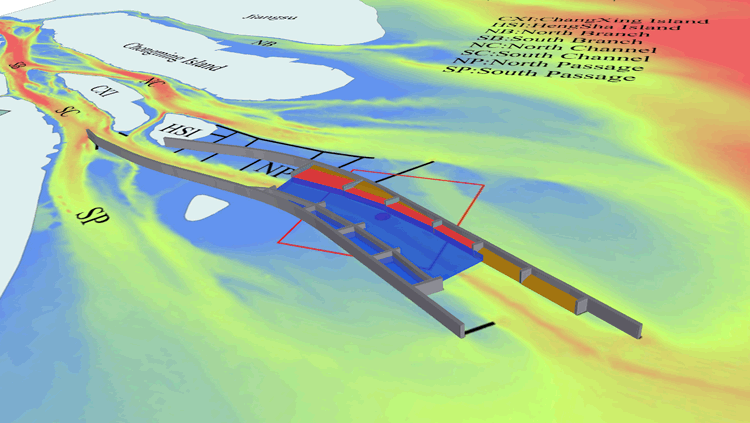Zaiyang Zhou1, Jianzhong Ge2*, Bas van Maren1,3, Yu Kuai1, Pingxing Ding2, Zheng Bing Wang1,3
1 TU Delft,
2 ECNU,
3Deltares,
Introduction
Lateral transport of sediment profoundly contributes to sediment distribution in a tidal channel-shoal system. This research focuses on sediment transport patterns, especially on lateral transport in the North Passage of the Changjiang Estuary. By means of in-situ observation and a validated numerical model, firstly, two sediment transport patterns during low and high water slacks are given. Slack-water dynamics are emphasized in this paper. Momentum balance analysis explains dynamic reasons for lateral sediment transport during high water slacks, stratification and bed level change explain the effect of this lateral transport on sediment accumulation. Secondly, longitudinal oscillation of high-concentration suspended sediment is clearly showed. Calculation of residual sediment flux points out main mechanisms for longitudinal sediment trapping in this system. Particularly, a comparison numerical case is set up, in which one groyne is removed, to further investigate the impact of the groyne-induced lateral flow during low water slacks on sediment transport.
Methods
In this research, we deployed a tripod system between the deep channel and the north shoal in the North Passage. Besides, a high-resolution unstructured-grid Finite‐Volume Community Ocean Model (FVCOM) which includes hydrodynamics and sediment dynamics is also applied.
Results
This figure explains the retention effect of groynes on saline water (red part) during ebb tide. Due to this effect, salinity-induced density flow would occur during low water slacks, forming a lateral flow in this channel-shoal system. Except for discussion on lateral flow, we also quantify the effect of groynes on lateral sediment transport. Residual sediment flux would be significantly impacted if one groyne is removed in the numerical simulation. Another important pattern is sediment accumulation on the south shoal during high water slacks.
Figure 1 Sketch map of the North Passage in the Yangtze Estuary.
I. Surname1*, F.N. Another-Surname2 , Y. Next-Surname2
1 University Name, Country; 2 Organization Name, Country
* Corresponding author: mail.name@organization.org


